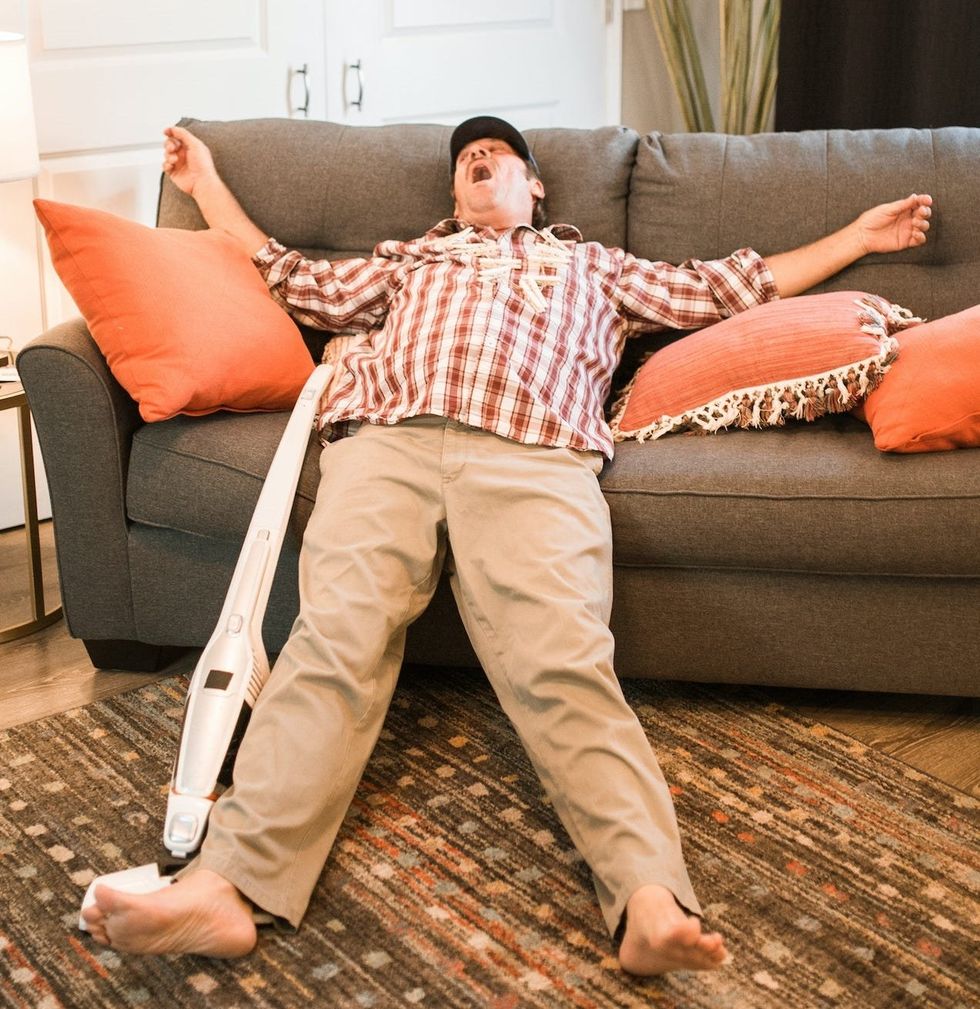Hands-on treatments also help your therapist to target the specific muscles and tendons that are causing your shoulder pain.
Physiotherapy narellan is an effective treatment for a wide variety of shoulder pains and conditions. These include shoulder impingement, small rotator cuff tears and mild to moderate osteoarthritis.
A physio will assess your shoulder and put together a tailored treatment plan that should get you back to doing the things you love again. They can also help you improve your posture and arm positioning to minimize the risk of further injury or re-injury.
As a doctor, I would suggest the following improvements to the given information:
● Emphasize that prompt treatment of shoulder injuries is crucial to prevent long-term damage and dysfunction.
● Highlight the importance of seeking medical advice from a doctor or physiotherapist before attempting any exercises or stretches on your own.
● Stress the need for patients to follow their physiotherapist's instructions and attend all recommended sessions in order to achieve the best possible outcome.
● Clarify that while manual therapy and ultrasound therapy may be beneficial, these treatments should only be done under the guidance of a trained professional.
● Mention that in some cases, surgical intervention may be necessary to correct certain shoulder injuries that cannot be addressed through physical therapy alone.
There are a few different ways that Ndis physiotherapy can help reduce your shoulder pain. One is through strengthening your shoulder muscles and tendons to restore joint function and range of motion, which will help you get back to normal as quickly as possible.
Another way that physiotherapy can reduce your shoulder pain is through manual therapy, which consists of hands-on treatments such as massage and manipulation. These techniques can increase blood flow to the area, which can speed up healing and relieve pain.
Hands-on treatments also help your therapist to target the specific muscles and tendons that are causing your shoulder pain. They may also apply pressure to the tissue to break up scar tissue and restore mobility.
Your physical therapist can recommend exercises to strengthen your shoulder muscles and tendon, so they can work more efficiently and gradually restore joint function and range-of-motion. They will also teach you how to perform activities that are more comfortable for your shoulder, so that it doesn't cause additional problems down the line.
It is best to see a physiotherapist immediately if you feel pain in your shoulder. This will help to prevent the pain from worsening and will also help to reduce the likelihood that you need surgery later on.

What's the cause of your shoulder pain?
Although pain in the shoulder is common, it could be a sign that something is more serious. Call an ambulance immediately if you feel sudden, severe pain or swelling in the shoulder.
Most problems with your shoulder should resolve themselves within a few weeks, unless you have been in an accident or suffered serious injury. However, if you're having a problem that doesn't seem to get better with home treatment or over-the-counter medications, then it may be time to see a specialist.
The most common cause of shoulder pain is rotator cuff tendinitis or bursitis. The rotator-cuff is a collection of tendons and muscles that hold your shoulder joint in place. This allows you to move your arm forward, backward, or overhead. This area can become damaged by overuse or falling, and can show signs of wear as you age.
Calcific tendinitis is another condition that can cause pain in the shoulder. This occurs when calcium deposits build up in the tendons and tendons of your rotator cuff. This condition can cause severe pain, which often begins in the morning, and is more common in middle age and older adults. It can be treated with anti-inflammatory medication, corticosteroid injections, and physical therapy to increase range of motion and decrease pain. Sometimes, surgery may be necessary to remove calcium deposits.
How a Physiotherapist will assess your Shoulder pain
A physical therapist will perform a thorough history of your shoulder pain to understand the origin, frequency and severity. This information will help a physiotherapist determine whether you need a consultation with an orthopedic specialist or not.
Your therapist will then perform a comprehensive physical examination of your shoulder to assess different measures, such as sensation, motion, strength, flexibility and tenderness. They will also touch various areas on your shoulder to identify those that are most painful.
Shoulder impingement syndrome occurs when one of the bursae (small sacs between bones, tendons and muscles) becomes irritated or inflamed due to repeated friction. This can happen with a variety of activities, but it is most common in athletes and heavy workers.
You are having difficulty reaching across your shoulders and lifting your arm above your head. This can be a problem for anyone of any age or ability. Your physical therapist will prescribe exercises to regain your range of movement, balancing joint protection with motion restoration.
During your treatment plan, your physical therapist will teach you how to do exercises that will improve your shoulder motion, strengthen the shoulder and rotator cuff muscles, and decrease inflammation. They will also teach you self-stretching techniques to increase your flexibility and decrease the tension on your shoulders.
Physiotherapists are highly trained health professionals who use a broad range of treatments to treat a wide variety of injuries and conditions. Using a science-based approach, they maintain and restore health for people of all ages, enabling them to stay in work and to lead an active lifestyle.

How can a physio help?
If you have shoulder pain and want to reduce it, there are a few things a physical therapist can do. They'll assess the area and determine the cause of the problem and then treat it in a way that will help you to feel better and move more comfortably.
First, your physio will focus on reducing the symptoms by using soft tissue massage, mobilization and gentle stretching to loosen up the muscles and tendons in your shoulder. They'll also prescribe exercises to improve your flexibility and strength.
Next, you will be rehabilitated so that you can return to your normal activities and life as soon as possible. Your therapist will show you how to safely perform the activities and help you retrain your shoulder to avoid further injury.
Depending on the severity of your injury, your physical therapist may recommend different types of stretching and strengthening to target the specific parts of your shoulder and other joints. These exercises can be done at different levels and incorporated into your treatment sessions to help you gradually regain your range.
The physio will also provide you with education about your condition and the best ways to reduce your shoulder pain. They will tell you that your condition is not serious and can be treated with physical therapy, often without the need to use drugs or surgery.
What we expect of you at home
The shoulder is one the most mobile joints in the body. It's also the most vulnerable to injury and pain. It can sustain sprains, strains, dislocations, tendinitis, rotator cuff tears, bursitis and other injuries.
It can also cause constant discomfort making it difficult to perform everyday tasks such as lifting objects or playing sports. The good news is that physiotherapy can help you get better, faster and avoid future problems.
After your initial evaluation, you will be given a treatment plan that is tailored to your needs. This will include specific exercises, stretches and other treatments designed to relieve your shoulder pain.
We expect you to follow your physiotherapist's instructions and complete the exercise routine that they have recommended for you. It is important to be consistent with the program so that you can improve your mobility and gain better control of your shoulder pain.
We expect you to keep track of your progress and to follow up after each session. This will allow you to keep track of your progress, and ensure that you get reimbursement from your insurance company.
Frequently Asked Questions on Physiotherapy for Shoulder Pain Relief
What is physiotherapy and how can it help reduce shoulder pain?
Physiotherapy is a treatment method used for various shoulder pains and conditions, such as shoulder impingement, rotator cuff tears and osteoarthritis. Physiotherapy can help you recover from an injury, reduce pain, improve range of motion and prevent further injury through exercises, stretches, and manual therapy.
What are the common causes of shoulder pain?
The most common causes of shoulder pain are rotator cuff tendinitis or bursitis and calcific tendinitis. Rotator cuff tendinitis occurs due to overuse or injury, while calcific tendinitis is caused by calcium deposits in the rotator cuff tendons.
What is the best way to treat shoulder pain according to physiotherapists?
According to a survey of 480 registered physiotherapists, the most effective way to treat shoulder pain is through manual therapy, followed by exercise. Some physiotherapists also believe that ultrasound therapy can be beneficial.
When should I see a physiotherapist for my shoulder pain?
It is recommended to see a physiotherapist as soon as you experience pain in your shoulder to prevent it from worsening and reducing the likelihood of needing surgery later on.
What will a physiotherapist do to assess my shoulder pain?
A physiotherapist will perform a comprehensive physical examination of your shoulder, including a history of your pain, to understand the origin, frequency and severity. They will also assess measures such as sensation, motion, strength, flexibility, and tenderness.
Can physiotherapy help with shoulder impingement syndrome?
Yes, physiotherapy can help with shoulder impingement syndrome. A physical therapist will prescribe exercises to improve shoulder motion, strengthen the shoulder and rotator cuff muscles, and decrease inflammation to treat impingement syndrome.
What should I do if I feel sudden, severe pain or swelling in my shoulder?
If you feel sudden, severe pain or swelling in your shoulder, call an ambulance immediately. This could be a sign of a serious condition that requires immediate medical attention.





 Going to the cinema alone is good for your mental health, says science
Going to the cinema alone is good for your mental health, says science












 women in street dancing
Photo by
women in street dancing
Photo by  man and woman standing in front of louver door
Photo by
man and woman standing in front of louver door
Photo by  man in black t-shirt holding coca cola bottle
Photo by
man in black t-shirt holding coca cola bottle
Photo by  red and white coca cola signage
Photo by
red and white coca cola signage
Photo by  man holding luggage photo
Photo by
man holding luggage photo
Photo by  topless boy in blue denim jeans riding red bicycle during daytime
Photo by
topless boy in blue denim jeans riding red bicycle during daytime
Photo by  trust spelled with wooden letter blocks on a table
Photo by
trust spelled with wooden letter blocks on a table
Photo by  Everyone is Welcome signage
Photo by
Everyone is Welcome signage
Photo by  man with cap and background with red and pink wall l
Photo by
man with cap and background with red and pink wall l
Photo by  difficult roads lead to beautiful destinations desk decor
Photo by
difficult roads lead to beautiful destinations desk decor
Photo by  photography of woman pointing her finger near an man
Photo by
photography of woman pointing her finger near an man
Photo by  closeup photography of woman smiling
Photo by
closeup photography of woman smiling
Photo by  a man doing a trick on a skateboard
Photo by
a man doing a trick on a skateboard
Photo by  two men
two men  running man on bridge
Photo by
running man on bridge
Photo by  orange white and black bag
Photo by
orange white and black bag
Photo by  girl sitting on gray rocks
Photo by
girl sitting on gray rocks
Photo by  assorted-color painted wall with painting materials
Photo by
assorted-color painted wall with painting materials
Photo by  three women sitting on brown wooden bench
Photo by
three women sitting on brown wooden bench
Photo by 
 Photo by
Photo by  Photo by
Photo by  Photo by
Photo by  Photo by
Photo by 


 people sitting on chair in front of computer
people sitting on chair in front of computer











